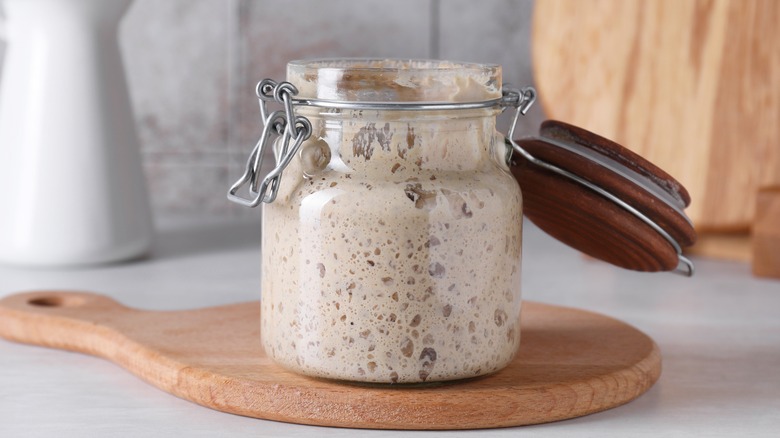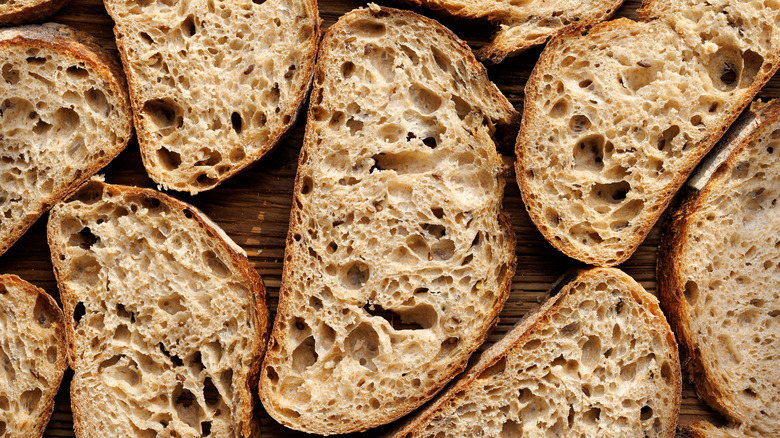The Absolute Best Time To Bake With Your Sourdough Starter
Sourdough bread is one of those obsessions that people don't understand until they try it for themselves (and are then unable to stop). It can be a meditative way of baking bread and is an endless learning experience with mistakes made along the sourdough-way. The star of the show, of course, is the sourdough starter. Starters can be used at almost any time, but many bakers agree that it's best to use the starter when it's at its peak. But what does that mean? Well, the peak signifies the point of the greatest yeast activity in the starter, ultimately resulting in the best rise of your dough and flavor of your bread. But pinpointing exactly when your starter is ready can be a challenge. Luckily, we have an easy hack that solves this conundrum. When the sourdough starter reaches its peak height in the jar, that's the absolute best time to use it.
Finding the peak height is really simple, and you only have to do it once. Feed your hungry starter just like you normally do, and mark the starting height. Then, check on the starter every two hours and mark its new height. Continue doing so until the starter begins to fall. The highest mark on your jar represents your starter's peak height. Make a note of that point (a rubber band is ideal for this), and you'll always know exactly when your starter is at its peak just by looking at it. No more guessing games.
Use sourdough starter at its peak for the best bread
Sourdough starters usually need 4–12 hours after feeding to reach their peak. The timing depends on the feeding ratio and the external temperature; warm and watery starters rise faster than cold or flour-heavy ones. When your sourdough starter finally reaches its peak height in the jar, you have about an hour's window when its flavor is strongest. Every starter is a little different, though, so keep a close eye on yours the first time you're measuring the height to determine exactly how long its peak window is. Thicker starters, for example, tend to have a longer peak window, which gives you a bit more flexibility.
Baking with a starter that's not at its peak will still give you edible bread, but it won't be that perfect sourdough loaf you're hoping for. Using a starter before it's had time to peak will slow down the rising process and result in improperly risen bread with a very mild flavor. If you're going to the other side of the spectrum and using a starter well past its peak window, the flavor of the bread may be overly sour and acidic, and its texture will be dense instead of airy. Getting your starter right truly is one of the key tips to producing good sourdough bread, so make sure you're giving it the necessary TLC — in turn, it will reward you with beautiful, airy, and tasty loaves.

